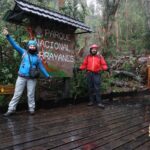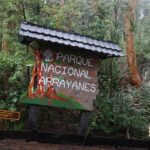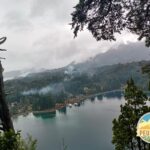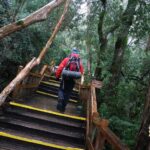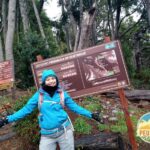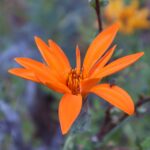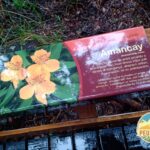Mountain Guides
Trek Arrayanes Forest
Difficulty: Medium
Distance (one way): 12.5 km. (it is recommended to walk and return by catamaran)
Elevation gain: +500 m.
Duration: 3/4 hours. (Going)
Points of interest: Brava Bay, Quetrihué Isthmus, Brazo Angostura Viewpoint, Patagua Lagoon, Arrayanes Forest, Tea House.
IMPORTANT: Access to this sector of Nahuel Huapi National Park has established entry / exit schedules. The entry must be paid in CASH.
The trail runs through the entire Quetrihué Peninsula and offers beautiful landscapes of the forest and panoramic views of Lake Nahuel Huapi.
The Los Arrayanes National Park includes the Quetrihué Peninsula that enters the Nahuel Huapi Lake, in the south of the Province of Neuquén. It belongs to the Patagonian Forests ecoregion. It was created in 1971 when detaching from the Nahuel Huapi National Park, with the aim of protecting a unique myrtle forest, one of the purest and most extensive of this exquisite species.
The Arrayanes are concentrated in the Quetrihué Peninsula (Neuquén province), which is located at the northern end of Lake Nahuel Huapi.
The Arrayanes forest represents a unique landscape in the world and is one of the best-known places in our Patagonia.
The myrtle is a native tree of subtle charm, with a cinnamon-colored bark covered with whitish spots, cold and soft at the same time. It grows very slowly on the banks of rivers and lakes and can reach 15 meters in height. Its small, shiny green leaves are perennial and contrast in summer with the numerous white flowers that fill its branches. When the sun breaks through the foliage, the entire forest is flooded with ocher colours, creating a subdued and fantastic atmosphere.
It is accessed from Bahía Brava, 3km from the center of Villa La Angostura, at the entrance you must pay an entrance fee to the National Park.
The tour begins through a forest full of Coihues and Cypresses, which alternate with bushy vegetation, on a path with a moderate slope until we reach the viewpoints where we will stop to contemplate the beautiful landscapes.
From here, the slope becomes more gentle with lush vegetation and several native flower species. Finally, you can visit the tea house, a nice place where you can have a snack or buy local handicrafts and souvenirs.
It is undoubtedly one of the most beautiful places in Argentina where we will find the purest and most extensive forests of Arrayán, a native tree of striking beauty.
In the forest we will find myrtles (called "quetri" in Mapudungun) and next to these other evergreen species, especially the coihue. The arboreal vegetation also includes Ñire, Cypress of the Guaitecas, Cypress of the Cordillera, Radal, Huahuan, as well as species of lower height such as Patagua, Notro or Boldo. The understory is formed mainly by Maqui (Aristotelia chilensis), Caña Colihue and the introduced shrub Rosa Mosqueta.
Several species of birds inhabit the area, such as the imperial cormorant, which nests on neighboring islands, and the grey-headed goose, as well as forest dwellers such as the chucao, several species of woodpeckers, and the rayadito.
Along the water is also the strongly protected Patagonian river wolf: the huillín. The species of the forest are difficult to see due to their elusive behavior; They include the monito de monte —which, despite its name, is not a primate, but a small marsupial—, the red fox or culpeo, the huiña cat, and one of the smallest artiodactyls, the pudú.
Are you coming to visit him?
Views: 23
